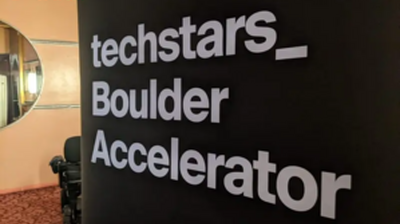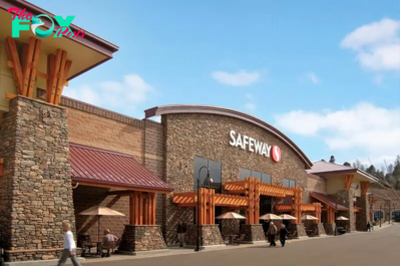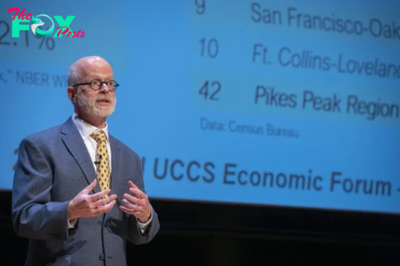Technology
Denver Broncos on verge of giving fans faster internet as it installs Wi-Fi 6E at stadium
When the Denver Broncos face the Cleveland Browns on Dec. 2, the crowds at Empower Field at Mile High just might notice a new surge.
The Broncos are hoping to turn on Wi-Fi 6E stadium-wide, which will make the internet much faster for fans to check fantasy football stats, follow other games, share selfies or whatever they do with a phone while at a game. Mile High is also one of the first NFL stadiums to roll out the update.
“It’s all brand new. No other venues are running this thing yet,” said Russ Trainor, the team’s senior vice president of information technology, adding that the rollout ran into some delays due to code issues. “I’m curious to see how this thing works because we haven’t turned it on in this kind of environment before. And we’re curious to see how many phones will connect.”

Trainor, who’s been with the club since 2008, tries to keep the Broncos ahead of the game when it comes to tech. The internet is already fast — Trainor did a speed test in the stadium and hit 4 gigabits. But it’s no longer just about faster internet. He’s also got to stay ahead of trends like face recognition, cashless concessions and cyberthreats. In a behind-the-tech tour at the stadium Wednesday, Trainor pointed out how the company invests in tech and cybersecurity because “the owners want to make sure we have a good experience for the fans,” he said.
The Broncos have always been a tech-driven team in the NFL, said Paul Kapustka, editor and founder of Stadium Tech Report, an industry publication that’s been covering the rollout of wireless Technology at America’s stadiums for the past decade. Upgrading Wi-Fi like the Broncos are doing could cost between $5 million to $10 million, though Kapustka suspects it’s on the low end since the Broncos aren’t starting from scratch (Trainor declined to share the cost).
“Everybody wants to call themselves the most connected stadium (but) they’re definitely among the leaders and have been for a long time,” said Kapustka, who lives in Boulder. “In terms of connectivity, the Broncos have always paid a lot of attention to both cellular and Wi-Fi. And they have some pretty good partners in Cisco and Verizon who have kept them with the latest technology to be able to offer the best speeds that they can.”
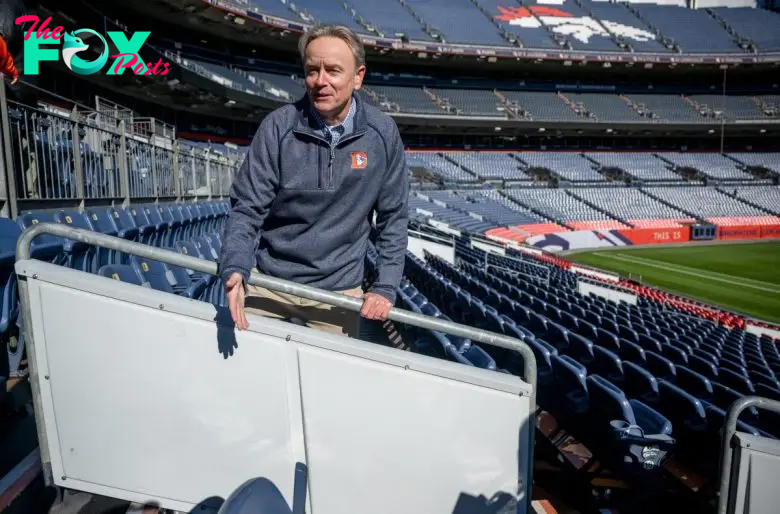
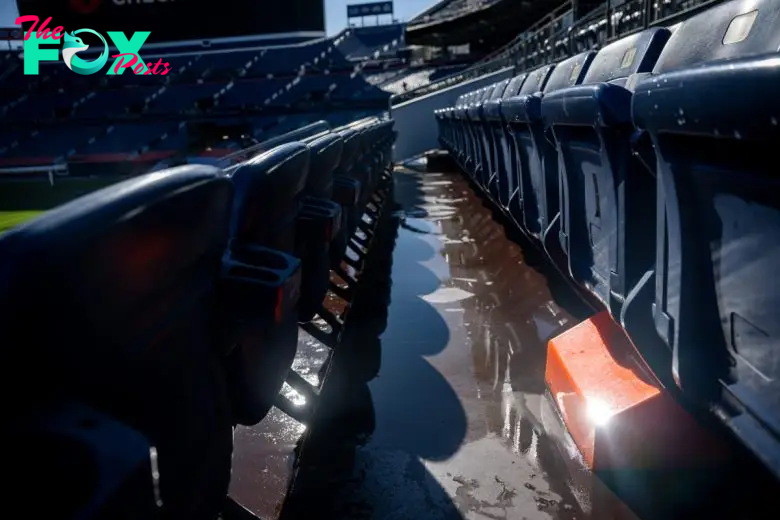
The Broncos are using products from Cisco to upgrade to Wi-Fi 6E. The upgrade means installing new access points all over the stadium to replace the older ones hidden inside hand rails along the aisles as well as underneath some seats.
The latest iteration of the now-common wireless service is 6E, which operates on the less congested 6 GHz spectrum and essentially has twice the capacity. While the tech has been out for a couple of years, Broncos fans may not notice the upgrade. They’ll need to have a 6E-compatible device (looking at you owners of iPhone 15 Pro and later models), and be doing something extremely bandwidth heavy, like livestreaming the game in the highest resolution possible. The tech is also backward compatible and still supports all other Wi-Fi users.
But to make sure fans are covered not just for their existing data appetites but future bandwidth needs, the Broncos are adding 50% more access points, to 2,400 from 1,600.
The internet isn’t just for the fans. It’s now being used for ticketing, payment systems at merchandise stores and concession stands, and to identify who gets to go behind the scenes — right now, that’s limited to the players, employees, the media, etc.
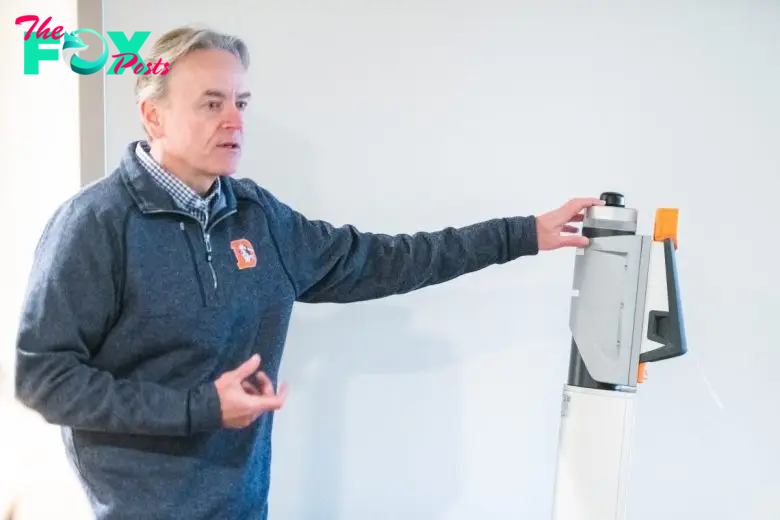
Mile High stadium is part of the NFL’s rollout of facial authentication from a company called Wicket. Instead of just carrying a credential, all visitors to the press room must get their face scanned. The Technology isn’t face recognition so no pictures of people are stored. Rather, a digital map of a person’s face is captured and used to verify — not recognize — a user. A face scanner greets everyone trying to get into the press box.
“It’s physical security but it’s really technology enabled,” Trainor said. “The good thing about that is if I go to a Seattle game and if I’m already registered, they just check me off a list (after a face scan) and I’ll be able to get right in.”
Similar face scanning hasn’t been rolled out to the public yet at Mile High, but it could be soon.
The Cleveland Browns are already using the technology at Huntington Bank Field. The stadium has 12 concession stands using Wicket and Aramark’s face-scanning technology allowing pay with your face. “They have an iPad and you just walk up to it and look at it and it says, ‘Oh, hello Paul, you have two tickets,’ and me and my guest can just walk in,” Kapustka said.
☀️ READ MORE
Colorado’s past greenhouse gasses worse than thought, but the future may be better than expected
Denver heat pump incentive targets multifamily, commercial buildings for more efficient heating and cooling
The TV peak for “American Ninja Warrior” has passed. But Colorado’s young stars are growing the sport off screen.
But a connected stadium also means investing more in cybersecurity. The team uses Check Point Software to keep the systems updated and watching for anything usual. Robbie Elliott, head of engineering for Check Point’s west region, said that sports teams have been targeted, like the San Francisco 49ers in February 2022 when the team got hit by a ransomware attack that disrupted its corporate IT network and claimed to steal financial data.
As with any good corporate security hygiene, the Broncos segment their networks so if one is attacked, the others are closed off. They update, they patch software, they have a password policy to change passwords every six months, Elliott said.
“If a ransomware attack happened on game day here, it’s all locked down,” Elliott said.

So far, so safe, Trainor said. But that just means his IT staff of 10 people works with Check Point to constantly watch the network for potential threats plus test its most vulnerable spots: the staff. His team randomly sends out faux phishing emails to train employees on identifying what not to click. That includes the executive team, who can often be targeted by thieves looking for the weakest spot into the system.
“The good thing is that we haven’t” had a bad attack, Trainor said. “Some people can get phished and click on a piece of malware (in an email) but luckily they’ve been more marketing-spam-type scenarios, not really bad-guy scenarios. Ransomware scares the crap out of me. … From our view, we put on a show for everybody else. We just need to make sure the show goes on.”
-

 Technology7h ago
Technology7h agoTransplanting insulin-making cells to treat Type 1 diabetes is challenging − but stem cells offer a potential improvement
-

 Technology8h ago
Technology8h agoJapan's $26 billion deep sea discovery sparks serious environmental concerns | The Express Tribune
-

 Technology12h ago
Technology12h agoShould I worry about mold growing in my home?
-

 Technology12h ago
Technology12h agoBlurry, morphing and surreal – a new AI aesthetic is emerging in film
-

 Technology1d ago
Technology1d agoSpaceX’s Starship advances in spaceflight despite booster landing failure | The Express Tribune
-

 Technology1d ago
Technology1d agoGreat Barrier Reef faces 'significant coral deaths' following recent climate events | The Express Tribune
-

 Technology1d ago
Technology1d agoMeta to challenge India's data-sharing restrictions between WhatsApp, other apps | The Express Tribune
-
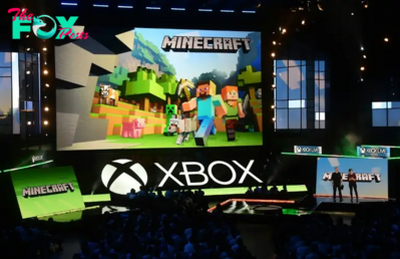
 Technology1d ago
Technology1d agoMerlin inks £85m deal to bring Minecraft attractions to UK, US parks by 2026-2027 | The Express Tribune




